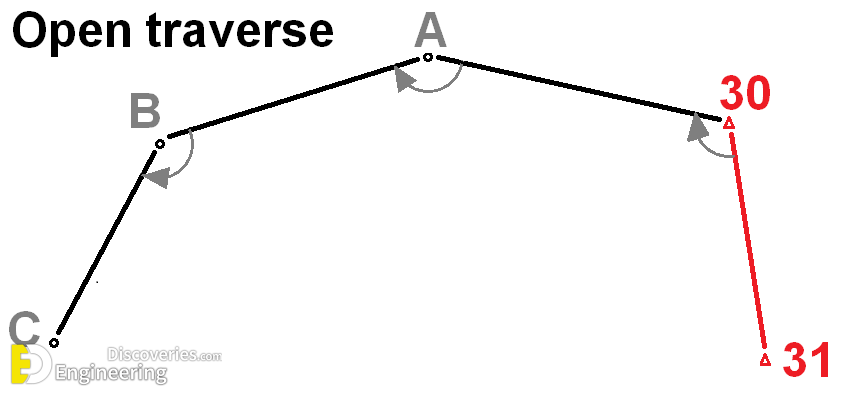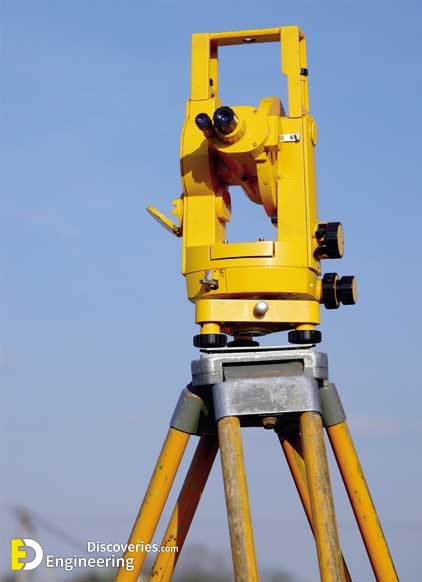A traverse is a series of connected lines whose lengths and directions are to be measured and the process of surveying to find such measurements is known as traversing. In general, chains are used to measure length, and compass or theodolite are used to measure the direction of traverse lines. The types of traverses and methods of traversing are discussed in this article.
Types of Traverse
A Traverse may be of two types. Namely
1- Open Traverse
2- Closed Traverse
1- Open Traverse
A traverse is said to be an open traverse when the traverse starts at one point and terminates at another point as shown in the figure. Open traverse is also called an unclosed traverse. It is suitable for surveying roads, coastal lines, etc.
2- Closed Traverse
A traverse is said to be a closed traverse when the traverse formed a closed circuit as shown in the figure. In this case, both starting and terminating points of the traverse coincide with each other. It is suitable for the survey of boundaries of ponds, sports grounds, forests, etc.
Methods of Traversing
1- Chain Traversing
2- Compass Traversing
3- Theodolite Traversing
4- Plane Table Traversing
1- Chain Traversing
Chain traversing is done by taking linear measurements only. Hence, chain or tape is enough for chain traversing. The angle between the adjacent traverse lines is measured using the chain angles concept. Chain traversing is performed in areas such as ponds etc. where it is difficult to adopt triangulation. The chain angles concept is nothing but finding the angle between two adjacent sides by establishing the third side using tie stations. This angle between the sides can also be fixed by establishing a chord of known length between the sides.
2- Compass Traversing
In the case of compass traversing, both linear and angular measurements of traverse lines are taken by using chain and prismatic compass respectively. Both fore bearing and back bearings are measured and required corrections for local attraction are applied. If any closing error is obtained while plotting of traverse, then the Bowditch rule is applied for the adjustment of error.
3- Theodolite Traversing
In the case of theodolite traversing, the linear measurements are done by using the chain or stadia method, and angular measurements are done by theodolite. Using theodolite, the magnetic bearing of the first traverse line is measured and from that magnetic bearing of other sides is calculated. This method is very accurate compared to other methods.
4- Plane Table Traversing
In the case of plane table traversing, the measuring and plotting of the traverse on the paper are done simultaneously. The plane table equipment is set up at every traverse station one by one in a clockwise or anti-clockwise direction. The sides of each traverse station are drawn on paper to a suitable scale. If there is any closing error, graphical methods are used for its adjustment.
Click Here To See Total Station Advantages, Disadvantages, And Precaution








